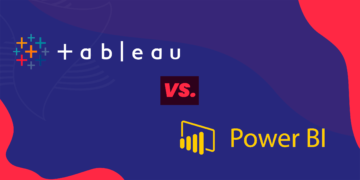Hello there! Welcome to my first article, this time, about a rather interesting tool by Salesforce Data Loader! I have used and abused it during my work as a Data Analyst, so I am most excited to tell you all about it!
What is Data Loader?
In the words of the greatest #1 CRM in the world itself, Data Loader, previously known as AppExchange Data Loader and Sforce Data Loader, is a “client application for the bulk import or export of data”, which basically means that Data Loader is the tool you may use to get data in and out of Salesforce. While this tool has been around for quite a long time now, and many others have emerged ever since I still believe that it still is incredibly useful. At this point, I can honestly tell you that Data Loader is not the new kid on the block, but surely is a rather cool kid on the block! In fact, among its major advantages, you will find the speediness of the tool, the immense number of records it handles (up to 5,000,000 – yes, you have read it correctly!), and so many others about which I will be talking in this post!
Why are we all still so in love with Data Loader?
By now, you have got me already! I am rather a fan of Data Loader, but I am not its only fan. In fact, tons of people use this tool for a variety of reasons. Here are some of the most important advantages I see in Data Loader.
- It can easily be inserted into your computer. Its implementation is rather simple. You just have to go to the setup menu in your Salesforce, and click the download link on the Data Loader tab. You will find links for both Mac and Windows, so you have no excuse not to install this tool on your computer!
- It is super simple and easy to use. Be careful now, as I am not saying it does magic. Just like any other tool, you have to know what you are doing, so that you can make the best out of it. Still, I will give you a very quick look at the seven main functions of Data Loader, so the ones you will probably use more often. Just check the table below!
- Insert – This allows you to insert new records into Salesforce
- Update – Lets you make changes to existing records inside of Salesforce
- Upsert – Pairs the above functions, thus updates a record if it already exists, or if not, inserts it
- Delete – Deletes records from the system
- Hard Delete – While the delete option still stores data in the Recycle Bin for a limited time, Hard Delete will remove it completely
- Export – Enables you to export information from the system into a CSV format, such as Excel
- Export All – Do not make confusion between Export All and Export. They are a bit different, as Export only extracts “live” records, whereas Export All will also remove assets in the recycle bin as well as anything that has been archived
So these functions do sound quite straight-forward and easy to guide you while using Data Loader, right? Cool! Let’s take a look at the other advantages of this platform!
- As I have said before, Data Loader allows you to insert up to 5,000,000 records. If you do not think, at first sight, that this is a lot, then let me tell you that with the Import Wizard, that number goes down to 50,000 records max! See? Rather powerful this Data Loader tool!
- Another thing I love about Data Loader is how versatile it is! As someone who has used it while working in a worldwide TELCOs enormous project, I can tell you that I have used Data Loader in a wide variety of situations, and it has never failed me. It does indeed offer you tools and settings for you to handle basically any scenario. And, you don’t have to be a Salesforce pro to use these settings correctly. Even if you only know the basics of the Salesforce ecosystem, you will find usefulness in Data Loader. If you are a Salesforce professional, then you will find even greater purpose in the tool and its many settings!
- Is free! Yes, you have heard it right! Data Loader is a Salesforce client-free application! So, what are you waiting for to implement this tool?
Is Data Loader a bed of roses?
Well, just like any other platform, Data Loader also has its cons, although I would not point a lot of them! However, some people might feel a bit frustrated with the fact that you have to download it. I have never felt much pain about it but still is fair to mention.
Besides, another topic you must take into account about Data Loader is that it is a Salesforce application, so you will not be able to use it with other systems. As I was saying, Data Loader is the cool kid on the blog, and cool kids use Salesforce!
Oftentimes people have asked me whether or not I believe Data Loader is the perfect tool to export and import data into Salesforce. I do not believe in perfect tools, so I would not describe Data Loader as a bed of roses. Yet, it is a very very powerful and useful tool, if you know its tricks. So in the following topic, I will tell you my personal tips and tricks on Data Loader, as someone who has used and abused it!
Data Loader – Tips and Tricks
- Know the tool – I can not emphasize this enough! Before jumping for a Data Loader download, try to learn more about the tool. And this is very easy to do, as, with each release, Salesforce provides a Data Loader guide that explains perfectly the functions of the tool, its best practices, installation steps, etc. This guide is super useful and will cost you nothing!
- Use Data Loader when you have tons of records to upload – This tool has been designed thinking about the creation/import of loading between 50,000 and 5,000,000 records. So, if you need to download a small dataset, you can just use Import Wizard (about which I will talk in a minute).
- Understand your Instance and Data Model before implementing Data Loader – This is a rather general tip for any Data tool you use. You have to know your data model well, before implementing these types of tools. Yet, when it comes to Salesforce, it is even more important that you study the ground in which you will implement new apps, as no two instances are the same, and all of them have their own particularities.
- Create your own backup – It is likely that you will engage in tons of modifications on your dataset and that it will suffer some changes as you work on it. So, I can only advise you to create your own backups while working. By backups, I mean that you should frequently be exporting from the Data Loader the datasets you are working on so that you can consult them whenever you feel like it. These backups will be life-saviors when you do wrong calls or make mistakes.
- Be careful when you delete and modify data – This is a rather general piece of advice, but again, I have to stress it. Backups are indeed life-saviors (I can tell!). Yet, especially when you are making important decisions on your dataset, pay attention to what you delete and modify, and to the ways in which you are doing those actions. Are you using functions that will delete permanently your data? Are you opting for throwing it in the recycle? These are some of the questions you may put to yourself when carefully managing your datasets!
To use or not to use Data Loader?
We are finally getting to one of my favorite parts of this post! So, am I supposed to use Data Loader or just use any other tool? And believe me, there are tons of these tools out there! In this post, I will quickly tell you about the pros and cons of using Data Loader, Import Wizard, and Dataloader.io. These are my top 3 data loaders, and I have been in contact with the three of them, which makes me rather comfortable to talk about this and do such comparisons!
Data Loader:
After reading this post, no surprises here. Data Loader was indeed created by Salesforce and, as I have told you in this article, it is a very powerful and must-have tool for big loads of data export and import.
Its top advantages, no doubts here, have to do with how quick, versatile, and powerful when it comes to storage it is. As for disadvantages, I would point to the fact that it only works with Salesforce and it has to be downloaded.
Data Import Wizard:
Data Import Wizard is the older brother of Data Loader. It was then, also developed by the #1 CRM in the world, and it is available in all editions. It has been upgraded over time and it is your best ally if you work with small data sets, up to 50,000 records at a time.
When it comes to its pros, I have to point to the fact that it is very simple and easy to use, and it allows you to import custom objects. On the other hand, it also has some bottlenecks, such as the fact that it is only suitable for small data sets, the fact that it only serves for data import, and you might be a little frustrated for the lack of setting it presents (especially if you have used a more powerful tool before).
Dataloader.io:
Dataloader.io was originally developed by Mulesoft, but as you may be aware, Mulesoft has been acquired by Salesforce, so we are now talking about a Salesforce tool. So, Dataloader.io is a cloud-based product and you do not have to download it, as you can just access it through your browser.
As for advantages, I would point to the fact that Dataloader.io has a very simple-to-use user interface, and also very advanced. Besides, being cloud-based is also pretty useful.
Yet, it has a major disadvantage that relates to the fact that it is a freemium product. So, do expect to pay for the best functionalities.
I hope this article has been useful to you! If you want to know more about CRM, Salesforce, and technology in general, subscribe to Stellaxius Blog, Knowledge Center! It was a pleasure having you here! 🙂
SUBSCRIBE KNOWLEDGE CENTER
Subscribe for free to our Knowledge Center to get the latest articles straight to your inbox!







